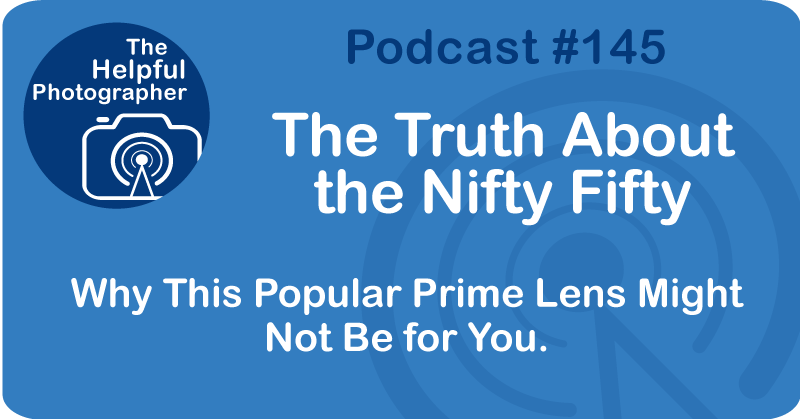The Truth About the Nifty Fifty #145

Oh, the Nifty 50. Today, I'm gonna say some things that would be considered a bit controversial in the photography world. I'm gonna start with the Nifty 50 isn't nifty. If you've been around photography for a while, you've probably heard people say that everyone should own a 50 millimeter prime lens, also known as the Nifty 50. Well, I'm here to tell you, I totally disagree.
A lot of people think the 50mm lens is a must-have because it's fast and it's inexpensive. And yes, in terms of price, it usually runs between $100 and $150, so it's not going to break the bank. It's also small and light, so people think, why not? But here's the issue. It only does one thing. And although it does that thing really well, it's not enough to justify the weight in my bag.
Let me back up. The question is why 50mm? I think the reason is this. In the old days, 50mm lenses were sold as the kit lens for all 35mm cameras. This was before zoom lenses became common. A 50mm lens is considered a standard lens because on a 35mm camera, which is the same thing as a full frame camera, it roughly matches what the human eye sees. But here's the catch. Most cameras today are not full frame. They're APS-C or even micro four thirds, which means the sensor is smaller. When you slap a 50mm lens on one of these cameras, you're not actually shooting at 50mm. It's more like 75mm on a full frame sensor.
So what's the problem with that? Well, if you're shooting indoors, like during family gatherings or Christmas morning around the tree, the 50mm lens is just too long on an APS-C camera. You're going to feel cramped, and you won't be able to capture the whole scene. Trust me, unless you have a massive living room, it's hard to fit everything in the frame.
Some photographers argue that using a prime lens like the 50 millimeter is the only way to learn composition. I get that, but I've been teaching composition for decades and you can absolutely learn it using a zoom lens. You don't need to restrict yourself to one focal length to master composition. It's just not true. You can ask the thousands of people who have taken a workshop with me.
Now one of the biggest reasons people argue for the 50mm is because it gathers a lot of light. More than your average zoom lens. And yes, it does. It absolutely does. But here's where things get tricky. A 50mm lens with an aperture of f/1.8 lets in 2.5 times more light than a f/2.8 lens, which is a lot of light and can be really great for low light situations. But the problem is if you're trying to shoot a school play or a basketball game in a dimly lit gym, you can't get close enough with that lens and you'll end up cropping your images so much that you'll lose resolution. So the resolution you gain by reducing the ISO through f-stop is going to be lost through cropping. So again, the argument for the 50 millimeter doesn't totally hold up here.
Another reason people love the 50mm is for the shallow depth of field. They're looking for that beautiful blurry background that makes your subject pop. I agree, it looks great, but here's the thing. You can mostly achieve that same look with the long zoom lens you probably already own. You don't need a 50mm prime to get that effect. And that shallow depth of field of that f/1.8 lens is often so shallow. People tell me they end up shooting at f/2.8 anyway. So what's the point?
To achieve that shallow depth of field look, you mostly just need to move your subject away from the background. Most people shoot too close to their background, and that's why everything is in focus. Move your subject away from the background, and you can get that lovely background blur without a nifty 50.
Another downside to the 50 is the lack of versatility. As a result, you'll end up with more lens changes. And I don't know anyone who wants to add more lens changes to their workflow. It just doesn't make sense to me. Now, I'm not saying the 50 millimeter doesn't have its place. There are photographers out there who can use it to its full potential, but that's rare. Most of the time, it's professionals who need the resolution that a good 50 millimeter offers. Those who are printing for magazines, billboards, or making huge prints. But for most people who are sharing photos on social media or viewing them on a phone screen, you don't need that level of resolution.
So in my opinion, the 50mm is more of a burden than a benefit for most photographers. And most people who own the 50 generally have it living on their shelf somewhere. It's a lens that does one thing well, but just doesn't offer enough versatility for the everyday photographer. That's my take on the Nifty 50. I hope that was helpful. In the next episode, I'll dive into the 35, 50, and 85mm lenses and how I think we got there.










